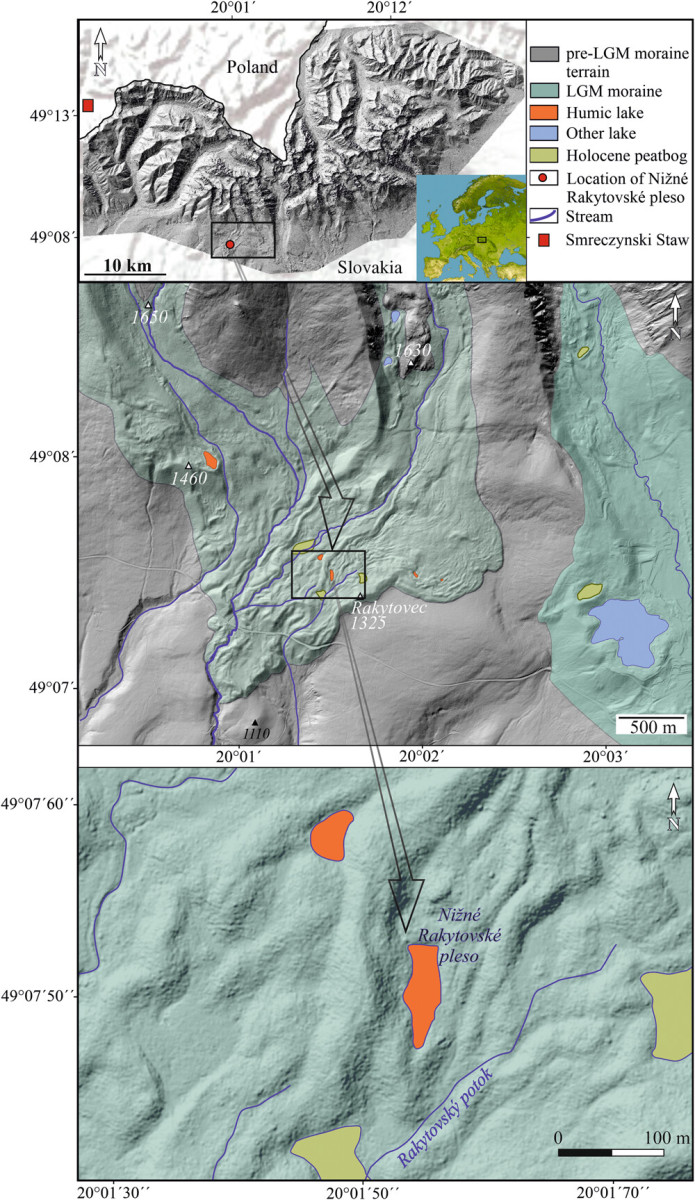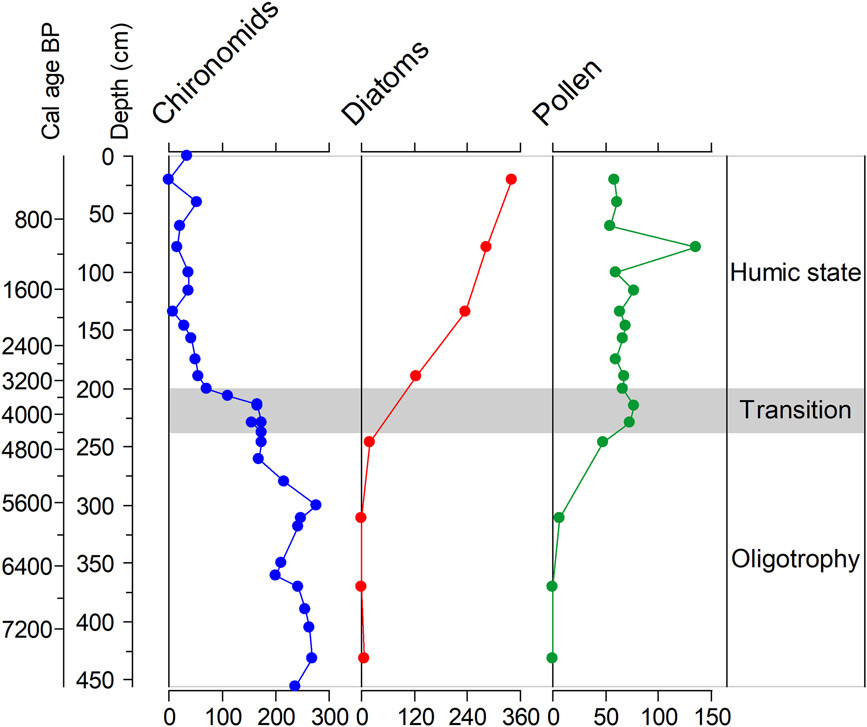While humic lakes are common in northern Europe, they are rare in central Europe. And their evolution is not yet well understood in our region.
In the latest article by Bitušík, et al. (2024), which also included our researcher – RNDr. Šárka Horáčková, PhD., the evolution of such a humic lake – Rakytovské pleso in the Tatras – over the last 8000 years is reconstructed.
In the article, they identified three phases of the development of this lake:
- Phase 1: from its inception, the lake was oligotrophic. Its chemistry was controlled by groundwater rich in basic cations, which buffered the effect of acidic humic substances from the forest and peatland already present in the basin.
- Phase 2: the beginning of the transition to this phase is marked by concurrent changes. Climatic changes, together with local geochemistry, were able to alter limnological conditions supporting unique chironomid communities that have no analogue in the present-day Carpathian Lakes.
- Phase 3: acidophilic/acid-tolerant taxa indicate characteristic humic lake conditions (~3400 years ago)
- Some taxa that first appeared ~2000 years ago indicate a dystrophic state in which the lake remains. Human activities have been detected in the area since the Eneolithic but have had no direct impact on the lake.
The article “From oligotrophy to dystrophy: the ontogeny of a humic lake in an extrazonal boreal taiga in Central Europe” was published in Journal of Quaternary Science (Wiley) – IF 2022: 2.3
The article is part of the research of the project:
- APVV-20-0358 / APVV-15-0292
- VEGA 2/0163/21






